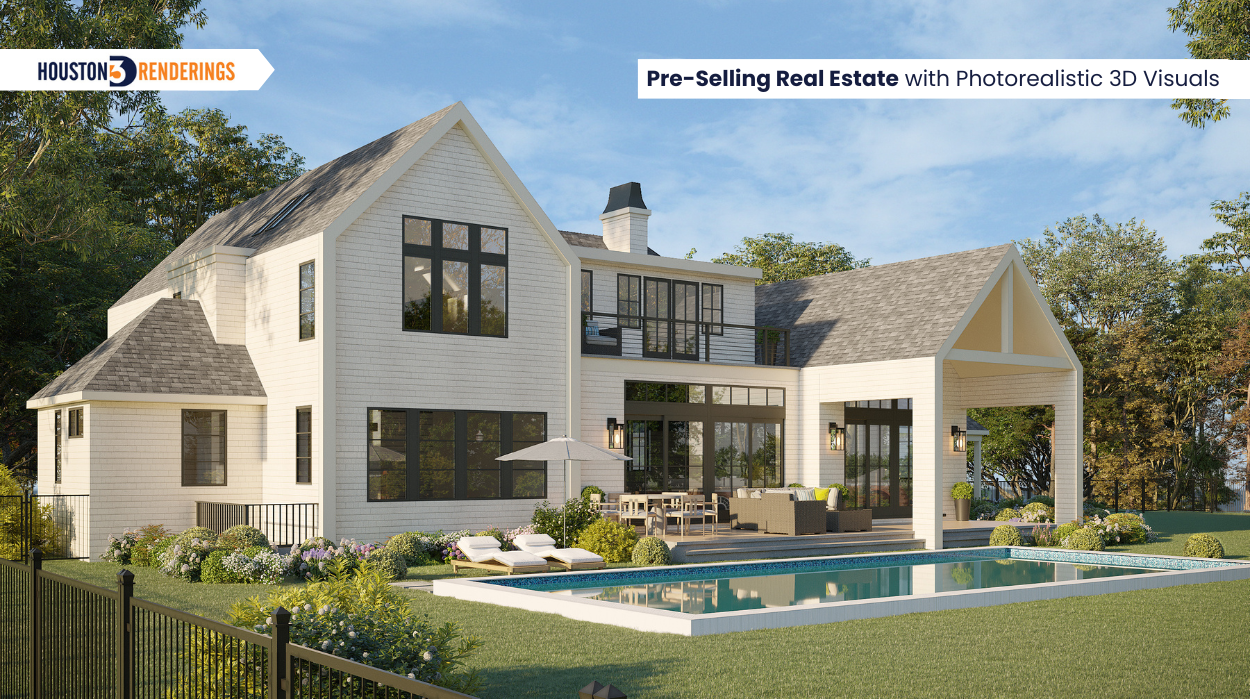
June 18, 2025
She Had a Vision. But No One Could See It—Yet. Let’s dive into how a set of 3D renders helped one woman believe in her project again.
Southampton homes don’t whisper; they speak in confidence—weathered shingles, archways of memory, porches that hold a century of summers. That’s the backdrop Ellie stepped into when she took on her latest project. But beneath the charm of the town and the elegance of her design board was a different story: pressure, doubt, and the fear that maybe… this one might not land.
Ellie had a vision, clear as day in her mind—but absolutely nothing to show for it. The walls weren’t up. The kitchen wasn’t built. And the market wasn’t going to wait.
She needed more than blueprints. She needed belief—first in herself, and then from everyone else.

Ellie was no stranger to real estate. She knew what buyers wanted. But this time, it wasn’t just about ticking boxes or choosing the right stone finish. This was about creating something that felt like it belonged—to Southampton, to its history, and to the people who’d one day call it home.
She reached out to us not with a pitch, but with a quiet kind of urgency.
“Can you help me make them see what I see?”
That’s how our collaboration began—not with a file, but with a feeling.

Before we touched a model, before lighting or angles or materials, we listened. To Ellie’s references. Her photos. Her voice notes. The way she paused before describing the kitchen. The sigh after explaining her timelines. We weren’t just rendering a structure. We were building trust.

The first ask: three exterior renders. Front. Rear. Side-rear. But each view had to do something different:
We studied the light in Southampton at 4 p.m. in July. We picked textures that felt coastal but never kitsch. We used shadow not as filler—but as a feeling.
These weren’t "just images." They were what-ifs. Invitations. A glimpse of something not built, but already beloved.

Ellie didn’t just want a kitchen—she wanted a feeling. Grounded, warm, and quietly luxurious.
We began by correcting the layout from the original plan, adjusting the render to match the true design intent. Then, we brought in the materials—each chosen for both beauty and balance.
At the center: a Morel Walnut island by Dura Supreme. Rich, dark, and slab-fronted—no frames, just bold, clean lines.
Surrounding it, Monterey Oak cabinets from Grabill, rendered with thin-framed doors to add refined contrast. The combination? A soft harmony between modern minimalism and timeless craft.

Lucerne White Oak flooring grounds the room with washed wood tones, while Everleigh Warm Polished quartz spans the countertops and backsplash—glowing gently in the natural light.
A copper hood anchors the space above, adding warmth and quiet drama.
The result? A kitchen rendered not just for function, but for feeling—where every surface tells part of the story Ellie imagined.
Ellie didn’t want a flashy bathroom. She wanted a sanctuary. A space where time slows down. A room that doesn’t demand attention, but rewards it.
The brief was simple: spa-like, clean, and intentional. But simplicity is never simple when it has to feel this personal.
We began with a muted palette—soft whites, matte textures, and creamy neutrals that reflect natural light without glare. The walls were kept minimal, allowing the materials to take the lead: porcelain tile with soft veining, brushed nickel fixtures, and a freestanding tub placed right where the light spills in. Every detail was chosen to feel tactile, not just visual.

This wasn't just about luxury. It was about restoration. Ellie’s vision was for future homeowners to walk in, exhale, and know they’d found their quiet place.
And that’s what the final render gave her—not just another beautiful bathroom, but a visual pause. A moment of peace in the midst of construction chaos.
We delivered the first drafts with butterflies in our stomachs. It happens every time—no matter how confident we are. Ellie’s reply came a few hours later. Simple. Almost too simple.
“This is exactly what I needed. Good job.”
But if you read between the lines, what she really said was:
I can finally see it too. This project is going to be okay. Thank you for helping me believe again.

For every client like Ellie, there’s a moment when doubt creeps in. When vision fades. When the numbers feel too big and the drawings too small.
We don’t just deliver 3D visuals. We create emotional clarity. Because sometimes, the render isn’t for the buyer. It’s for the dreamer who needs to see that what they imagined… can exist.
Whether it’s for a home, a client, or a vision that’s still taking shape—you don’t need to go through the process guessing how it will turn out. With us, you’ll see it. Feel it. And believe in it long before it’s built. Send us your sketches, your notes, your unfinished thoughts— We’ll help you bring it all to life. Contact www.Houston3DRenderings.com today—let’s make the unseen unforgettable.